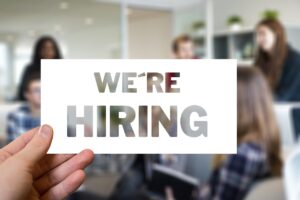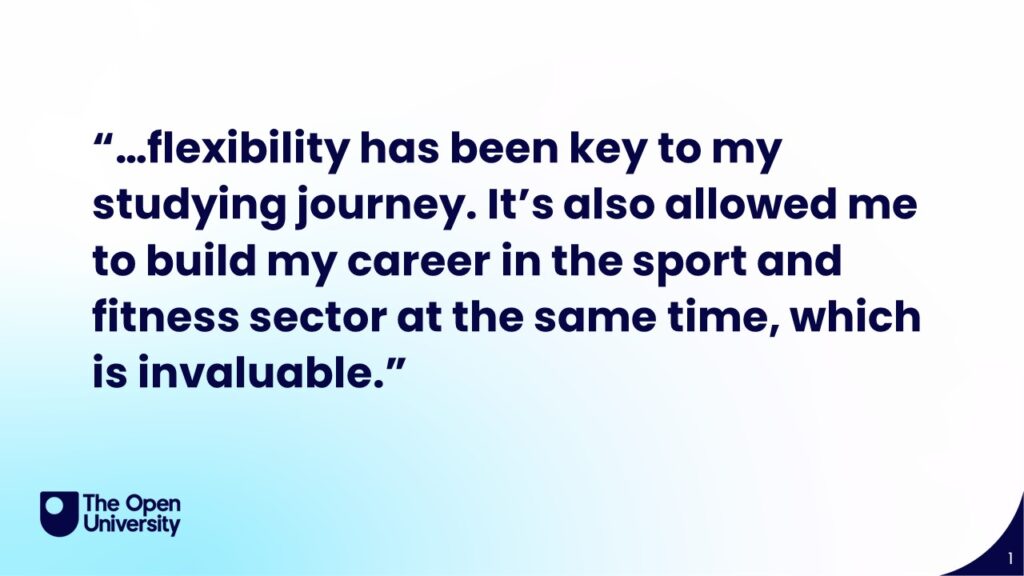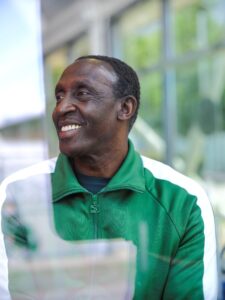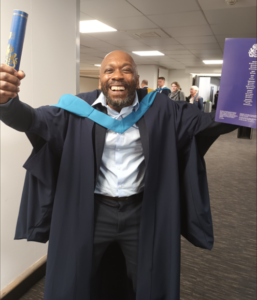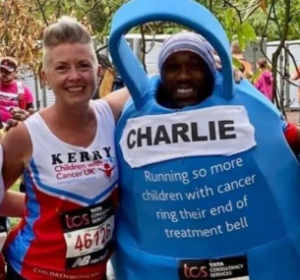By Ben Oakley
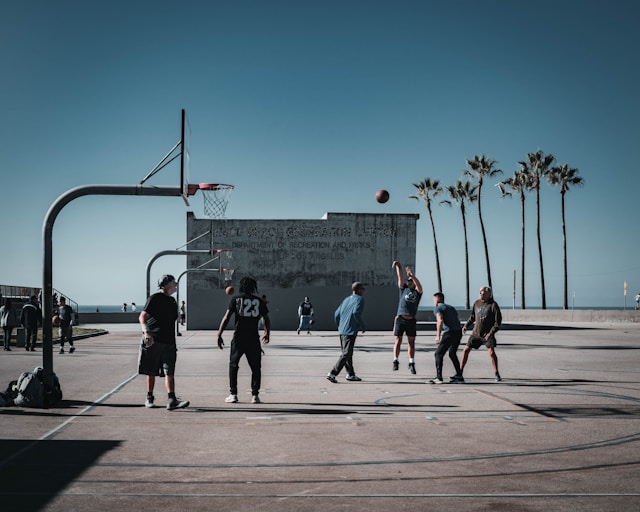 This purpose of this blog – which is one of the early readings for learners on our introductory module E114 – is twofold. It explores the main differences that exist between informal sport, exercise and physical activity spaces and those that are more formal and organised such as sports clubs and leisure centres. Some suggest that the use of formal spaces is in decline with informal spaces becoming more popular than in the past (Eime et al. 2020). In highlighting some of the distinctive features of informal activities the blog demonstrates why knowledge of these are useful for those working in the sector. Focusing attention on informal activity spaces is timely because the social and physical need for such spaces was highlighted by the experiences of living through the COVID-19 pandemic. Informal spaces are likely to be a growth area for physical activity participation in the coming years.
This purpose of this blog – which is one of the early readings for learners on our introductory module E114 – is twofold. It explores the main differences that exist between informal sport, exercise and physical activity spaces and those that are more formal and organised such as sports clubs and leisure centres. Some suggest that the use of formal spaces is in decline with informal spaces becoming more popular than in the past (Eime et al. 2020). In highlighting some of the distinctive features of informal activities the blog demonstrates why knowledge of these are useful for those working in the sector. Focusing attention on informal activity spaces is timely because the social and physical need for such spaces was highlighted by the experiences of living through the COVID-19 pandemic. Informal spaces are likely to be a growth area for physical activity participation in the coming years.
The blog also serves as a vehicle to show how two styles of writing can be deployed to discuss the same topic. A personal first-person reflective style is used in the first section, where the author draws on their own perspective and experiences and refers to themselves directly through the use of ‘I’ or ‘my’. The later section uses a more detached third-person objective style to discuss the topic more generally; this latter style creates narrative distance by positioning the author as an outside observer, often seeking to explain or analyse a topic drawing upon sources of information written by others rather than personal experiences.
The blog is structured with three sections. lt opens with some personal reflections of how activity spaces shaped the author’s sporting journey, followed by a section exploring the differences between formal and informal sport. The final section considers some of ways that informal sport spaces can become important to develop a sense of community among minoritised groups, before some concluding thoughts.
My childhood experiences of activity spaces
 I grew up in a medium sized town on the coast with considerable time spent at play outside. The influence of school sport and activities gradually became more and more important to me and much of my childhood was spent being active in education spaces. The sporting rhythm of the year was dictated by the seasons with football and rugby in the winter and cricket and athletics in the summer whilst occasionally we were introduced to ‘new’ sports such as basketball or volleyball during physical education (PE) classes. The spaces where these took place ranged from the indoor sports hall, the playground (mainly football in lunchbreaks), a playing field (rugby and cricket), the nearby city athletics track and the corner of a car park outside my house (varied activities). My mother was also member of a local watersports club where I learnt to sail, aged 6-7, and later competed in summer holidays. I was quite good at all these activities and without knowing it at the time sport became an important part of who I was – I became reasonably skilled and developed the confidence to embrace new activities.
I grew up in a medium sized town on the coast with considerable time spent at play outside. The influence of school sport and activities gradually became more and more important to me and much of my childhood was spent being active in education spaces. The sporting rhythm of the year was dictated by the seasons with football and rugby in the winter and cricket and athletics in the summer whilst occasionally we were introduced to ‘new’ sports such as basketball or volleyball during physical education (PE) classes. The spaces where these took place ranged from the indoor sports hall, the playground (mainly football in lunchbreaks), a playing field (rugby and cricket), the nearby city athletics track and the corner of a car park outside my house (varied activities). My mother was also member of a local watersports club where I learnt to sail, aged 6-7, and later competed in summer holidays. I was quite good at all these activities and without knowing it at the time sport became an important part of who I was – I became reasonably skilled and developed the confidence to embrace new activities.
Towards my later school years my diet of activities broadened further through my mum’s efforts and ability to pay for my new sports experiences. When school staff asked if we wanted to try new sports such as squash or tennis by travelling and/or paying for introductory sessions I leapt at the chance. With friends I travelled on public transport to either a club opening their doors or a local leisure facility. With racket in hand, I also took up casual self-organised summer badminton when we strung up a washing line in a friend’s back yard. I was also introduced to walking and camping in nearby countryside under the supervision of schoolteachers giving up their holiday time and mum paying for the trips. At that time I also learnt how to windsurf at a fledgling local commercial beach watersports centre; this activity later became the focus of my full-time coaching career.
Reflecting on the spaces I used, they were varied types across my childhood. Originally, they were dominated by school facilities, a friend’s garden and the car park next door to home. Gradually I started to use local leisure centre spaces and was introduced to sports clubs either as ‘member’ or as a ‘pay and play’ guest. My neighbourhood shaped my preferences since the watersports and hiking opportunities would not have existed if I had lived 20 miles inland or in a large city. I was privileged to have so many sports spaces nearby and a supportive mother.
Using the ‘formal’ and ‘informal’ activity distinction
In this section there is a change of writing style to the third person by positioning me the author as an outside objective observer. To help achieve this, ‘they’ or ‘it’, or similar, are sometimes used to indicate the more detached position of the writer.
One way to analyse the types of active spaces described in the above account of childhood experiences is to draw on the distinction between formal and informal active spaces. Formal spaces are places like a school sports hall, playing fields, sports clubs, local authority facilities or a commercial watersport centre; the space needs to be booked and sometimes paid for. A definition of informal spaces is one in which group based physical activities occur but without a club structure, significant fees, formal membership and without formal rules or referees. For this reason, the activity is often more spontaneous. It occurs in the public spaces often in urban environments ranging from green spaces to open access facilities on housing estates. These are often known as multi use games areas (MUGAs). It has been noted that informal ‘meetup’ physical activities ‘increasingly have a digital life in that they are sometimes arranged via mobile phone apps and on social media forums (Wise et al., 2018).
The formal and informal activity distinction is explored further using examples that help illustrate more precisely what is meant by informal spaces and why they have become more important in recent decades (Borgers et al. 2016). The first example comes from basketball. Until the 1990s there was a problem in basketball, like other indoor sports, of indoor facilities being a barrier to young people being able to play because it was expensive and you usually had to be part of a team to book a court (Basketball England, 2024). An outdoor basketball initiative was created to support informal street basketball by installing hoops into mostly public spaces. For about a decade from 1996 some 9,300 basketball hoops were fixed into the asphalt across England in spaces such as parks, recreation grounds, youth centres, schools, colleges, universities, housing complexes and community centres. The sportswear company Adidas were the main title sponsor with £1 million (Basketball England, 2024) and evidence of these and similar hoops are part of many neighbourhoods around the UK.
Researchers have observed informal sport as recognisable sporting forms (e.g. cricket, soccer and basketball)– termed by Borgers et al. (2016) as ‘sport-light’. ‘Participation is flexible with the opportunity for individuals to drop in and out’ (Jeanes et al., 2019, p.81). Informal sport activities are a familiar feature of urban life most visible of which are street football, cricket or basketball. The numbers of those participating in informal sport have increased and now outnumber those playing in clubs (Neal et al. 2024). However, there has also been ‘an increase in … less familiar forms of informal leisure activities such as volleyball, climbing, parkour, frisbee, wild swimming and urban running and walking groups’ (2024 p.877). This trend reflects the diversification of informal sport and leisure groups with collaborative and sometimes competitive features.
Developing a sense of community through informal sport
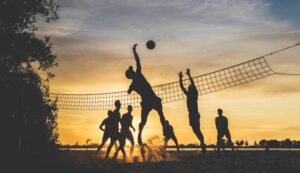 A further recognisable feature that has been reported is how informal sport often supports social aspects of a community and bolsters minority communities’ identities. Neal et al. (2024) describes an asphalt space in a corner of a London park in a low-income district. They report that on most warm evenings the space becomes a meeting place in which members of the Central and South American migrant communities come to participate in and watch volleyball matches. The ‘court’ and net are DIY created by the players. The players are pretty skilled and boisterous with their audience sitting in groups, some with food and some who appear to be betting on matches. They conclude that the neglected park edge transforms into a hubbub of loud social and sporting activity.
A further recognisable feature that has been reported is how informal sport often supports social aspects of a community and bolsters minority communities’ identities. Neal et al. (2024) describes an asphalt space in a corner of a London park in a low-income district. They report that on most warm evenings the space becomes a meeting place in which members of the Central and South American migrant communities come to participate in and watch volleyball matches. The ‘court’ and net are DIY created by the players. The players are pretty skilled and boisterous with their audience sitting in groups, some with food and some who appear to be betting on matches. They conclude that the neglected park edge transforms into a hubbub of loud social and sporting activity.
Informal activities such as this facilitate a sense of community and belonging amongst participants (King and Church, 2015). It is also suggested that informal opportunities can provide a valuable opportunity to expand participation to traditionally marginalised groups, e.g. those of low socio-economic status and ethnic minority communities (King and Church, 2015). Such unstructured opportunities often appeal to individuals precisely because they are not rule bound (Wheaton and O’Loughlin, 2017). In relation to parkour, the same researchers suggest participants are ‘often hostile to rules and regulations, especially those that are externally driven.
Final thoughts
Back in the 1960s, 70s and 80s informal sport consisted mainly of ‘jumpers as goals’ football matches in parks. However, a combination of new sports and forms of physical activity (e.g. skateboarding, BMX, parkour), the health benefits of exercise being recognised and more traditional sports adapting to meet people’s changing lifestyles has seen informal sport increase. Arranging collaborative ‘meet ups’ to play have also been supporting by subsequent developments in mobile and digital communication so that today there are a range of ways in which physical activity can be engaged with beyond traditional facilities. All these factors are important considerations for organisations such as National Governing Bodies (NGBs) of sport who are continually seeking to develop opportunities to attract new participants and keep existing participants involved in their sports. Urban planners should also consider how multi-use (e.g. 5-a-side football, basketball, netball, cricket), open access and free spaces are provided when new housing developments are created.
Reference List
Basketball England (2024) The history of the iconic Outdoor Basketball Initiative. Available at: https://www.basketballengland.co.uk/news/2024/the-history-of-the-iconic-outdoor-basketball-initiative/ Accessed 17th December 2024.
Borgers, J., Breedveld, K., Tiessen-Raaphorst, A., Thibaut, E., Vandermeerschen, H., Vos, S., & Scheerder, J. (2016). A study on the frequency of participation and time spent on sport in different organisational settings. European Sport Management Quarterly, 16(5), 635-654.
Eime, R., Harvey, J., & Charity, M. (2020). Sport participation settings: where and ‘how’ do Australians play sport?. BMC Public Health, 20, 1-9.
Jeanes, R. Spaaij, R., Penney, D. & O’Connor, J. (2019) ‘Managing informal sport participation: tensions and opportunities’, International Journal of Sport Policy and Politics, 11(1), pp. 79–95.
King, K., & Church, A. (2015). Questioning policy, youth participation and lifestyle sports. Leisure Studies, 34(3): 282–302.
Neal, S., Pang, B., Parry, K., & Rishbeth, C. (2024). Informal sport and leisure, urban space and social inequalities: Editors’ Introduction. Leisure Studies, 43(6): 875-886.
Wheaton, B., & O’Loughlin, A. (2017). Informal sport, instiutionalisation, and sport policy: Challenging thesportization of parkour in England. International Journal of Sport Policy and Politics, 9(1), 71–88.
Wise, A., Parry, K., Aquino, K., Neal, S., & Velayutham, S. (2018). Pushing casual sport to the margins threatens cities’social cohesion. The Conversation. Available at: https://theconversation.com/pushing-casual-sport-to-the-margins-threatens-cities-social-cohesion-92352 Accessed: 17th December 2024.




